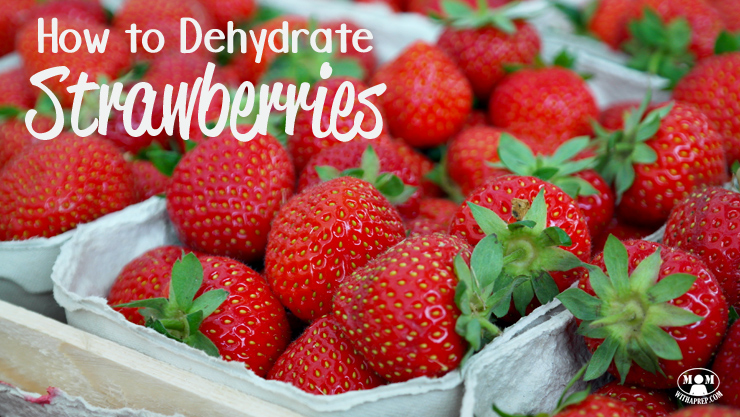
Strawberry season is a small window of opportunity to have fresh, tasty fruit available for all sorts of wonderful dishes, jams, etc. Because there is such a small window of opportunity to have fresh, locally grown strawberries, we stock up and dehydrate or freeze them to use throughout the year.
How to Dehydrate Strawberries
1. Wash your strawberries thoroughly. You can use a DIY vegetable wash, like this one from Jennifer @ AreWeCrazyorWhat.net, that helps remove residues you don’t want in your foods.
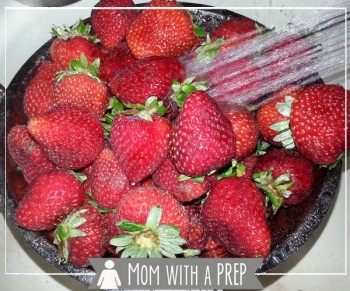
2. Hull the strawberries. You might just use a paring knife to do this. I just cut a v-shape under the greens and pull them out. You might buy a strawberry huller made specifically to do this work, or you can try the Quick Tip below using a straw. I used the straw in this photo.
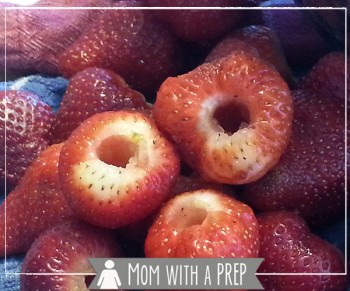
3. Slice your strawberries into 1/4″ slices. Keeping them thin and uniform will help them dehydrate at a consistent rate and take less time to dry.
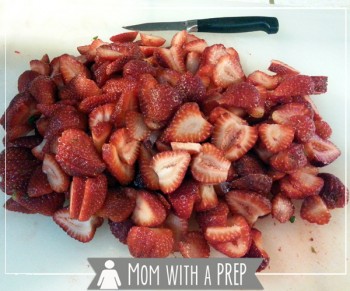
4. Arrange on a dehydrator tray. This is a good time to get your kids involved 🙂
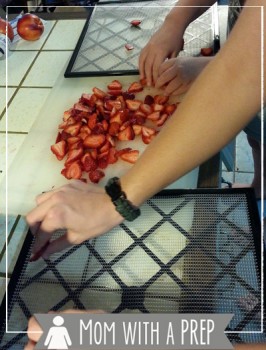
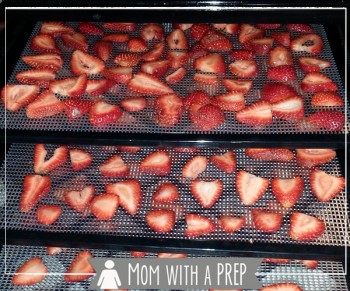
5. Place your trays in your dehydrator, set at 125-135F and dry until the strawberries are dry and pliable. This batch took only about 7.5 hours, but depending on your dehydrator’s power (wattage), and the moisture levels of your strawberries and the humidity of your area, they can take up to 15 hours. They may stick a little as you pull them off the tray, but that’s fine.
Store your strawberries in an airtight container. You can choose to put it in a canning jar with an oxygen absorber or vacuum can it, or use a mylar bag for long-term storage or vacuum seal them with a food sealer.
I’ll have a tutorial for you, next week, on how to vacuum seal your dehydrated products. Stay tuned!
Tools You Might Need:
Dehydrator (Excalibur or Nesco FD-80 are my recommendations) | Huller | Vacuum Sealing System | Jar Attachment | O2 absorbers
Quick Strawberry Hull tip
One quick note – while I’m using an aluminum straw in the photo, a regular plastic straw will work well, too.
# 1 – Place straw at the bottom point to the strawberry
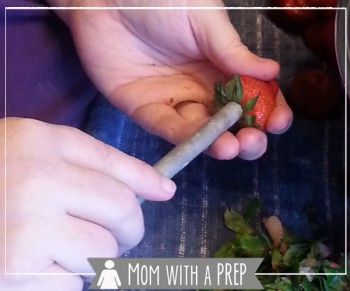
#2 – Gently push the straw up through the strawberry, being sure to aim for the middle of the crown as you push through so that you get all of the crown off.
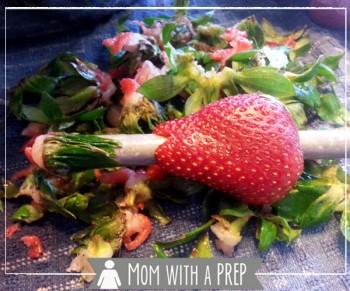
Discard the crown and use the strawberry as you had planned! I did 3 qt. packages in about 5 min, much faster than I did using a paring knife…and I kept more of the fruit intact.
Find more Dehydrator Recipes here
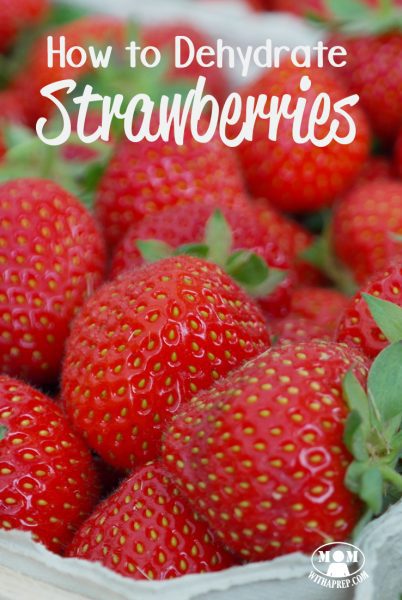
Katy Willis is a writer, lifelong homesteader, and master herbalist, master gardener, and canine nutritionist. Katy is a preparedness expert and modern homesteader practicing everyday preparedness, sustainability, and a holistic lifestyle.
She knows how important it is to be prepared for whatever life throws at you, because you just never know what's coming. And preparedness helps you give your family the best chance to thrive in any situation.
Katy is passionate about living naturally, growing food, keeping livestock, foraging, and making and using herbal remedies. Katy is an experienced herbalist and a member of the CMA (Complementary Medical Association).
Her preparedness skills go beyond just being "ready", she's ready to survive the initial disaster, and thrive afterward, too. She grows 100% organic food on roughly 15 acres and raises goats, chickens, and ducks. She also lovingly tends her orchard, where she grows many different fruit trees. And, because she likes to know exactly what she's feeding her family, she's a seasoned from-scratch cook and gluten-free baker.
Katy teaches foraging and environmental education classes, too, including self-sufficient living, modern homesteading, seed saving, and organic vegetable gardening.
Katy helps others learn forgotten skills, including basic survival skills and self-reliance.
She's been published on sites such as MSN, Angi, Home Advisor, Family Handyman, Wealth of Geeks, Readers Digest, and more.

